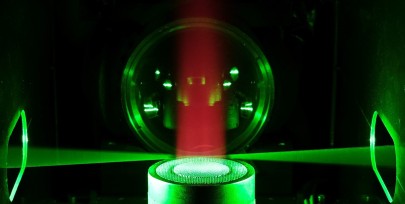M.Sc. Johannes Lill
Working area(s)
Contact
lill@rsm.tu-...
work +49 6151 16-28898
fax +49 6151 16-28900
Work
L6|01 122
Otto-Berndt.-Str.
64387
Darmstadt
Chemical energy carriers are still indispensable in the energy and mobility sector due to their practicability and high energy density. Thermochemical energy conversion will therefore play a major part in the transition to a sustainable energy mix in the next decades. To minimize their contribution to the emission of greenhouse gases it is necessary to both increase the efficiency of the energy conversion processes and accelerate a shift to renewable and therefore carbon-neutral alternative fuels. One promising approach for higher efficiency is combustion under higher pressure. To understand and optimize these rather new approaches, Raman spectroscopy in high resolution is able to determine both combustion species and temperature by fitting experimental Raman spectra to formerly created libraries under known conditions. For di- and triatomic molecules like O2, N2, CO, H2 or CO2 these spectral libraries can be created by directly simulating the underlying quantum mechanical processes.


In cooperation with the ODEE laboratory of Hochschule Darmstadt, high resolution Raman spectra are measured at higher temperatures and elevated pressures. The spectra are fitted to simulated Raman spectra to both validate the theoretical models as well as to determine species concentration and temperature. The simulation of Raman spectra is done by the RAMSES code (RAMan-Scattering Experiment Simulator) which is continuously being updated and advanced. Additionally, fitting algorithms must be created to account for background illumination, overlap of spectral features of different species (cross talk) and other interferences. Effects of higher pressure like spectral broadening, spectral shift and non-linear change of the Raman cross sections need to be examined, implemented in the simulating code and validated experimentally.


